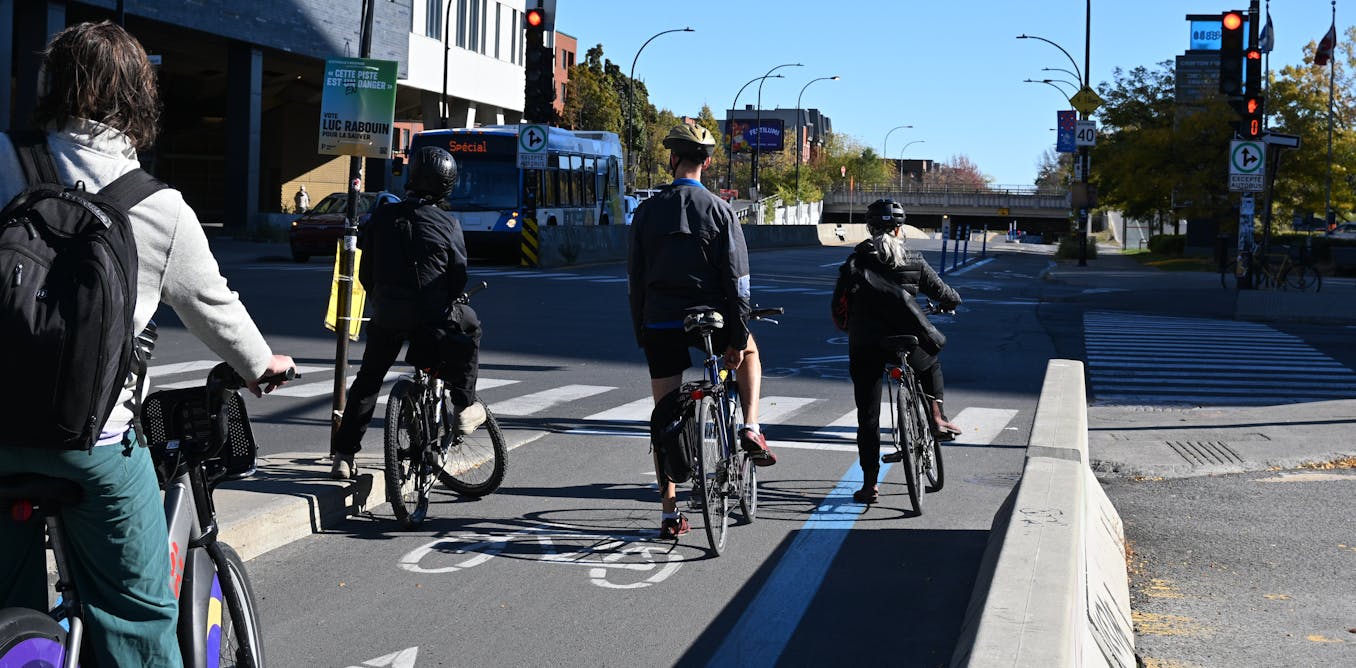The title is a bit clickbait-y. I went into this one feeling strongly opposed it. Afterwards I’m still not sure, but I get that there’s some nuance to it.
Relevance:
In Québec and other parts of Canada, discussions are underway to adopt such regulations.
Author: Steve Lorteau | Long-Term Appointment Law Professor, L’Université d’Ottawa/University of Ottawa
Excerpts:
Interactions between different users on roads are often a source of frustration, the most prominent being those between motorists and cyclists.
For example, many motorists are frustrated when they see bicycles cross an intersection without coming to a complete stop, which drivers are required to do.
As a professor of law at the University of Ottawa who specializes in urban law issues, I have studied various regulatory approaches that have been adopted around the world, each with different advantages and disadvantages.
The uniform application of traffic rules may seem fair, but in reality, it can create a false sense of equality.
On the one hand, the risks associated with different modes of transport are incommensurate. A car that runs a red light can cause serious or even fatal injuries. A cyclist, on the other hand, is unlikely to cause the same degree of damage.
Furthermore, the efficiency of cycling depends on maintaining speed. Having to stop completely over and over discourages people from cycling, despite its many benefits for health, the environment and traffic flow.
Treating two such different modes of transport the same way, therefore, amounts to implicitly favouring cars, something akin to imposing the same speed limit on pedestrians and trucks.
Since 1982, cyclists in Idaho have been able to treat a stop sign as a yield sign and a red light as a stop sign. Several American states (such as Arkansas, Colorado, and Oregon) and countries, such as France and Belgium, have adopted similar regulations.
In Québec and other parts of Canada, discussions are underway to adopt such regulations.
It’s important to note that the goal of the Idaho stop rule is not to legalize chaos on the roads. Cyclists must still yield to cars ahead of them at stop signs, as well as to pedestrians at all times, and may only enter the intersection when it is clear.



As a Dutch citizen: NO, stop at red!
No stop at red? Okay!
The headline is misleading to what is actually being proposed; the Idaho stop means treating stop signs as yields, and red lights as stops.
As if any Dutch cyclist would adhere to any traffic rules. The only thing in traffic that bikers in Rotterdam seem to respect is the tram. Anything else, be it signs or traffic lights, is treated as “decorative” or “optional”.
In Holland 🇳🇱 if you cycle through red while there’s a policeman on a bicycle or motorbike you’ll be getting a €120 fine.
In a lot of place around the world where a green light needed to be triggered by metalic object, then the rule is really : Stop at red, only go when it’s safe. Else you will wait forever. In Netherland, the development favour cyclist and pedestrian so it’s best to follow the existing rule, as the experience is already smooth.
Absolutely.
I’m fine with a simple yield on a stop sign, as long as you respect vehicle priority. But at a red light, you have to stop. It’s for everybody’s safey. Especially in a city.
Totally, why would you want to stop at a stop sign as a cyclist it’s not like you’re driving 50km/h
Yeah as long as you slow down a bit to check if there’s incoming cars or pedestrians you’re fine.
When traffic infrastructure is geared toward you and your safety, it’s easy and natural to follow the rules. If the traffic infrastructure is designed to make life convenient for car drivers while neglecting cyclists’ safety, don’t expect them to respect the rules over their own judgement.
Cool and when they get hit don’t blame the car drivers like they always do.
Do you get mad if a pedestrian jay-walks across the street? A bike running a light after determining it’s clear is closer to a pedestrian jay-walking than a car running a light.
From my perspective, you are saying “the cyclist got hit by a car. But he didn’t act perfectly within the rules that weren’t designed with his safety in mind. Therefore, it’s his fault and not the one driving tons of metal at high speeds.”
This isn’t an individual problem, it’s an infrastructure problem. In Amsterdam where it’s so safe they don’t even bother with helmets, they follow the rules. In a place with unsafe cycling infrastructure, only the most risk-tolerant will ride. And they will act more recklessly while ignoring road rules that aren’t built for them. As infrastructure improved, more people will start riding that don’t want to act recklessly and people will want to act within rules that were made for them.